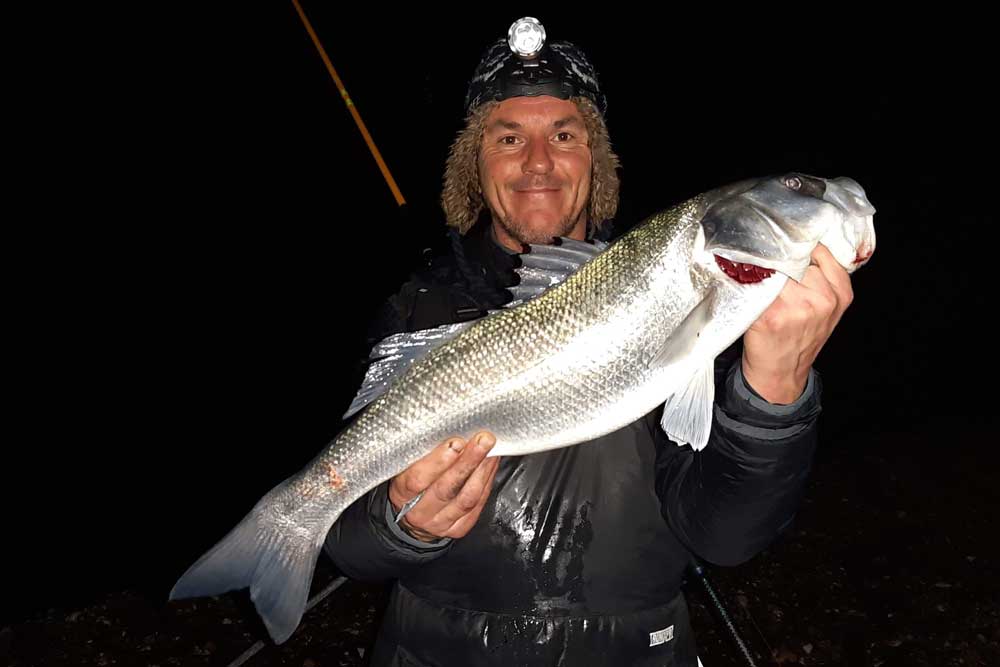Bass can be caught using many varied forms of tackle and tactics, but one of the most challenging, and the most rewarding is fishing rough ground. It’s also your best chance of finding consistently bigger fish.
Season
It’s the first batch of peeling crab in late March into April that brings the fish into the rough ground beaches. It’s just the odd fish at first, but as the crab peel increases so do the numbers of bass. Numbers build and will peak in early to mid-June. Once the crab peel slows down in July the bass move out to deeper water to target baitfish. The exception is that some solitary bass will always work the rough ground during this mid-summer period, and some fish will move back onto the rough ground if rougher weather prevails in July and August. By September the bass are back on the rough ground in numbers and stay until early December. In recent years of mild winters, individual fish still show in January.
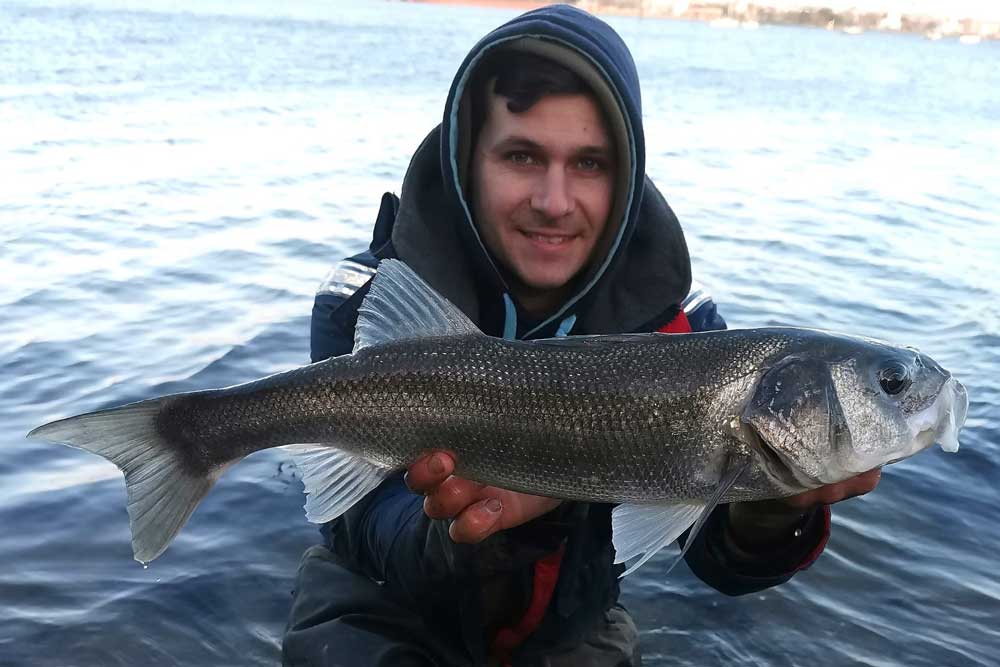
Habitat
Surf beaches with patches of rough ground will hold bass, but the best beaches are those that feature large expanses of boulders, very shallow reef ground or a mix of boulders, shingle, sand patches and weed.
The bass will be well spread over this rougher ground, but if you take a walk over it at low water, note where there are small pools of water left by the outgoing tide as these will collect and hold food washed down by the tide. Also, bigger boulders amongst more general sized boulders as these will hold water and be undermined holding crabs and small baitfish and bass will always investigate these. Casting near or into low lying weed beds works well as the bass swim through these flushing out crabs and baitfish. Simply look for any ground feature that stands out from the general ground composition.
One of the best places to try is into defined gullies between the rocks that work seawards. The bass will use these as routes into the beach as the tide floods in.
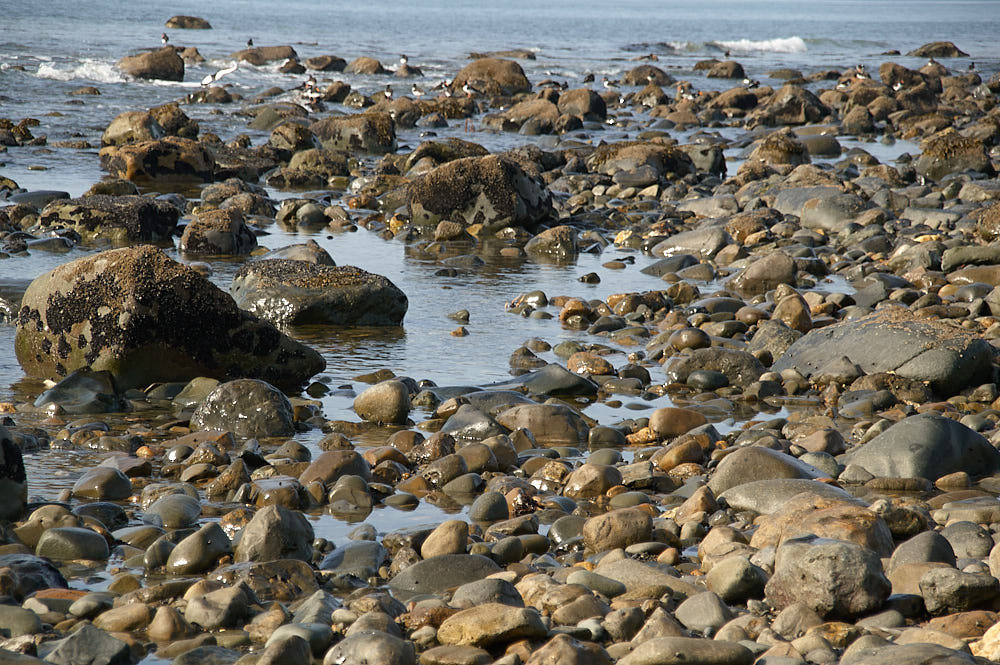
Weather and Tides
Good bass can be taken even when the sea conditions are settled with minimal swell. However, by far the best fishing will be when the sea is roughed up pushed in by a steady F2 to F5 wind. If you can fish heavier sea conditions, then you’re still in with a good shout, but in shallow water the bass tend to be much further out where they can’t get caught by the wave surge.
Again, bass can be caught in bright daylight under clear skies, but the fishing is better when it’s overcast, especially so on the shallower beaches. The more experienced rough ground bass anglers tend to favour night-time fishing as this generally is when the bigger numbers and bigger fish show.
The most consistent tides to fish are the middle-sized tides up to and including the highest spring tides. The smaller neaps might produce the odd fish, but they never seem to fish that well. The bass like the flush of a fast-pushing tide, plus it disturbs more food for them.
The bass can surprise, and you might get the odd fish on the last of the ebb, but it’s usually dead low water when bites start to increase and for the first hour to 2 hours of the new flood. The middle hours of the tide can often be quiet. The hour or so before and after high water slack can see fish caught, but as the tide ebbs the bites drop away. That said, much longer casts can take the odd fish or two that are working back off the rough ground and heading out to sea.
Tackle
Standard bass rods with a length of 11’ 6” rated to cast 2 to 4ozs, like the Tronixpro Banzai Bass, are perfect. These rods are light and powerful enough to land even double figure bass, but also sensitive regarding bite detection. Casts will normally be no more than 60-yards and you can fish either a 6500 sized multiplier, like the Tronixpro Guerilla Mono Mag, loaded with 20 to 22lb Tronixpro Blaze mono straight through as you’ll be casting lighter leads rarely more than 2ozs. If you prefer a fixed spool reel look at a size 5000 or 6000, like the Virtuoso Air and load with 20lb/22lb mono or 30lb Tronixpro X8 Power Braid. If you fish braid, add a Tronixpro Xenon 32lb shock leader around twice the length of the rod to help protect the braid from abrasion and hide the braid from the fish.
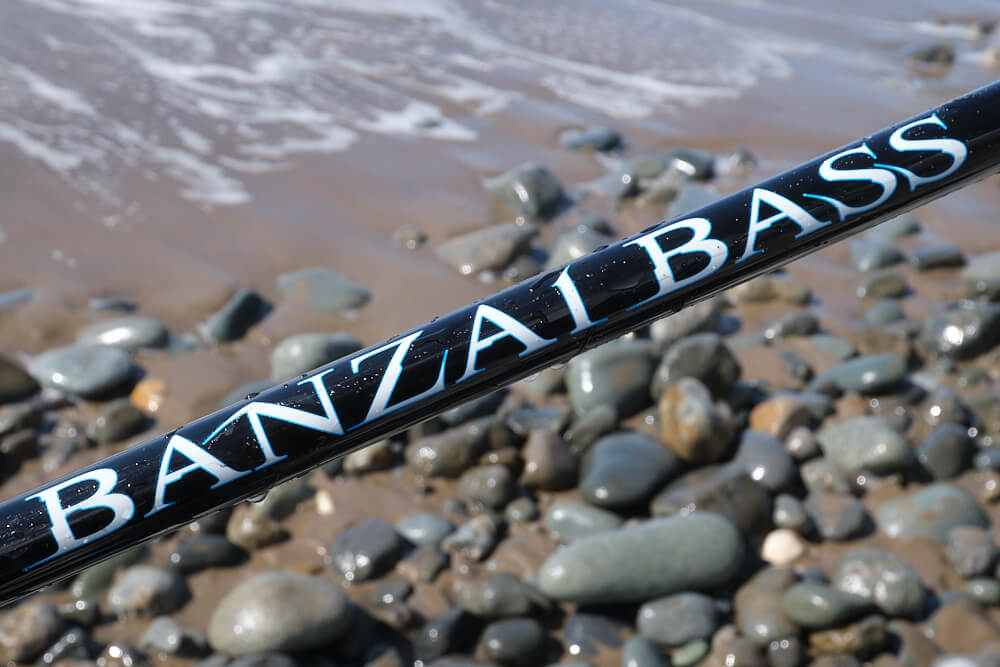
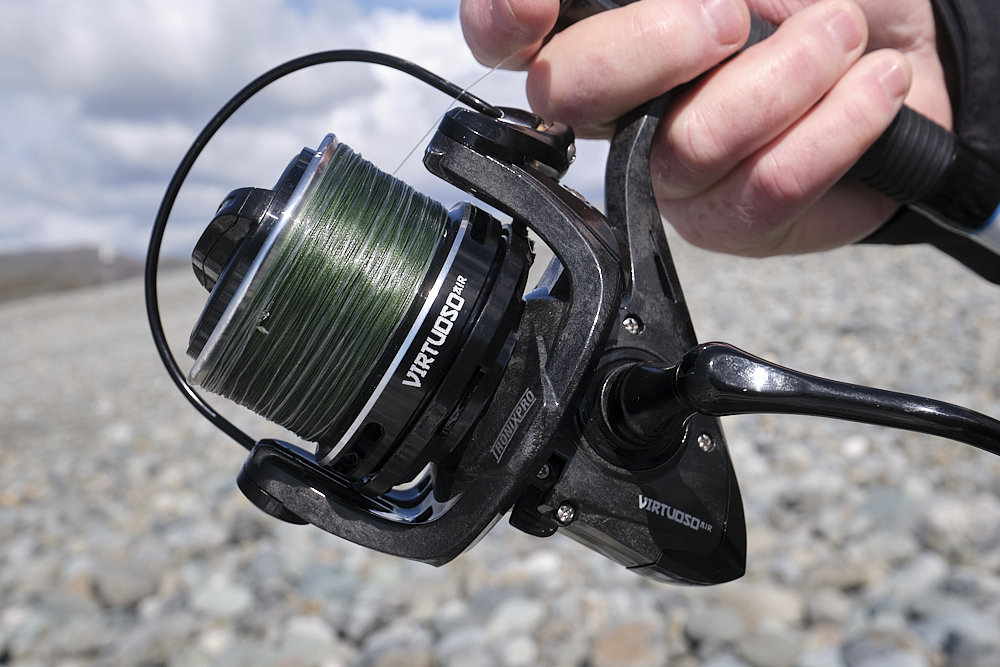
The most sensitive rig is a running paternoster. On to your main reel line or leader, slide on a size 6 Tronixpro Rolling Swivel followed by a black 5mm bead. To the tag end of your mainline tie on a size 6 rolling swivel. This takes your hook length which is 10 to 12-inches of 18lb Axia Fluorocarbon with a Tronixpro Beast Uptide hook size 3/0 to 4/0 tied on the end. To the free sliding swivel, tie on 18 to 20-inches of 18lb clear mono line. Your 1 to 2oz lead plain bomb type lead weight is tied directly to the 18lb mono. The 18lb line acts as a weak link and will usually break before the main line if the weight gets snagged. It saves both tackle and fish.
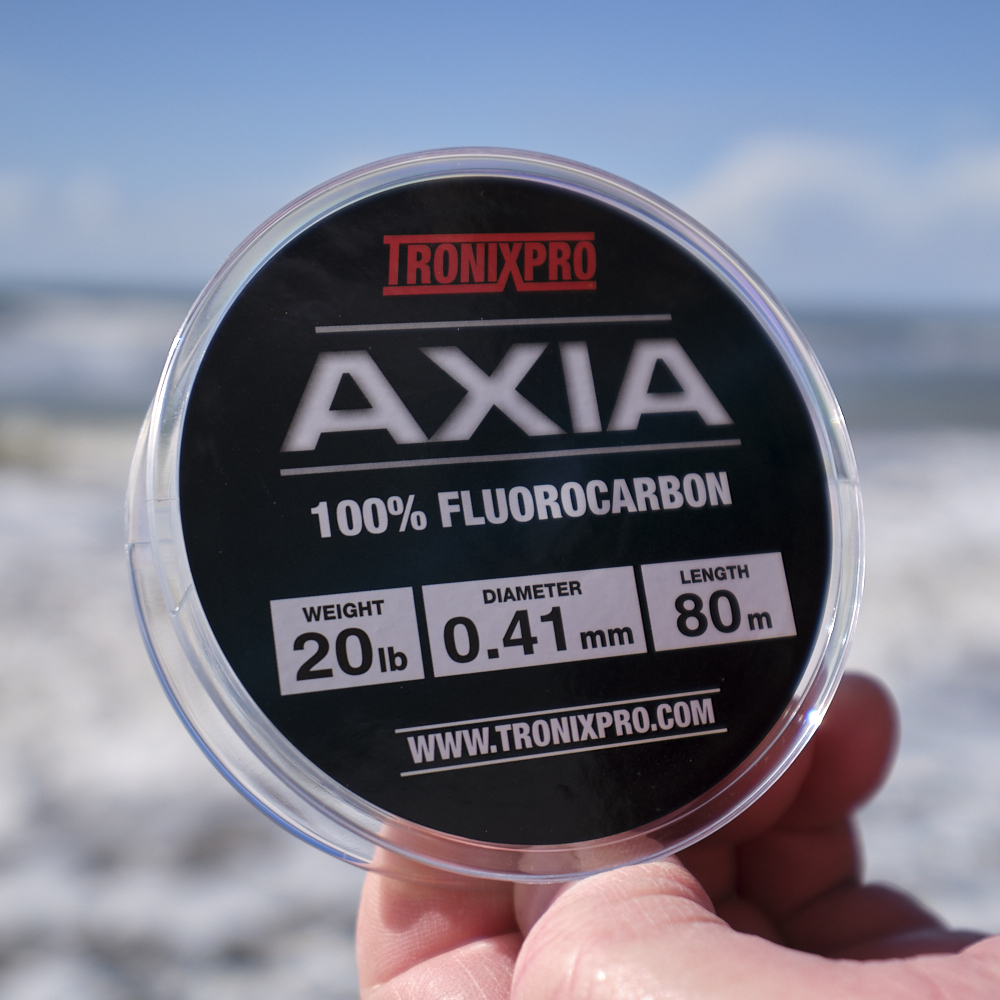
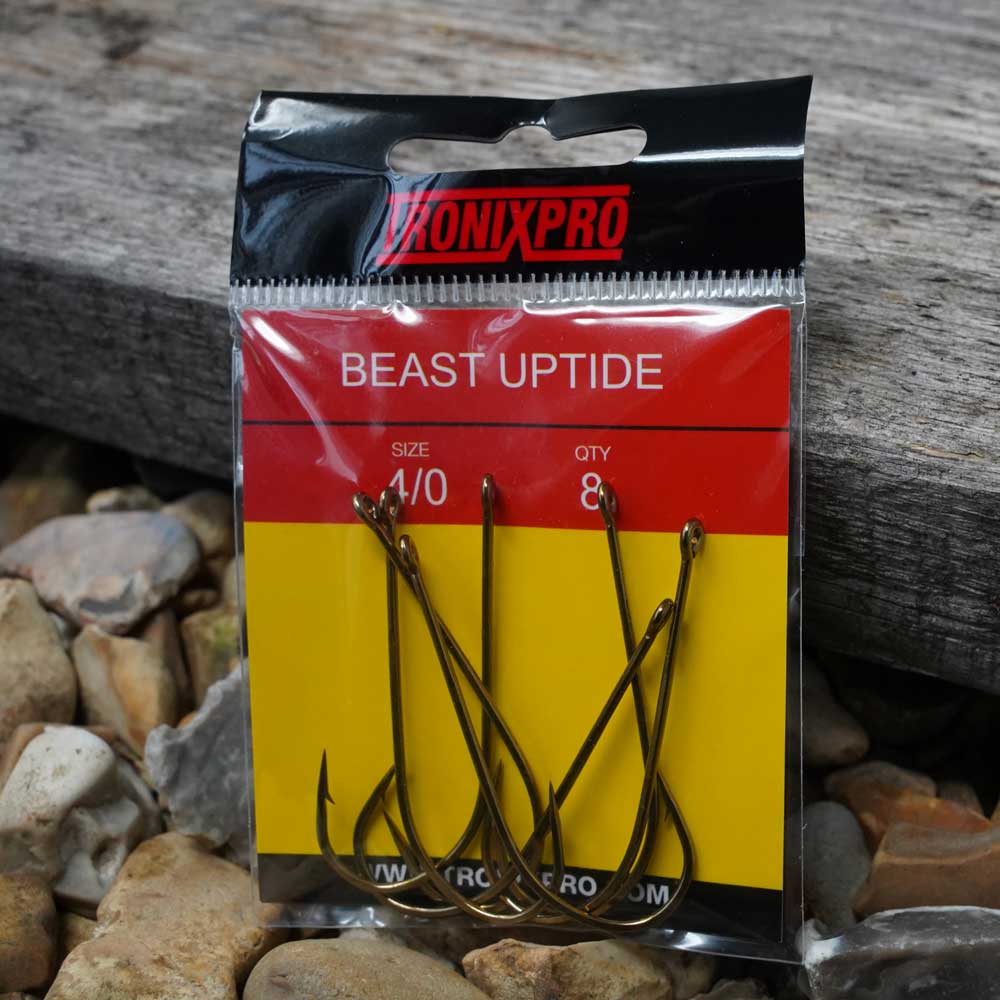
This rig transfers the bite directly through the line to the rod and then the hands. It helps you react quickly to bites.
The lighter weights will snag less than heavier weights and will cast plenty far enough to find the bass on rougher ground. A good tip if the lead weights are new and shiny is to soak them in malt vinegar overnight which will take the shine off them. Bass working in shallow inshore water can be very shy and spooky, anything out of the ordinary putting them on their guard, so anything you can do to minimise tackle being obvious is an advantage.
Baits
There is only one bait to use over rough ground and that’s either soft crab or better still, peeler crab. The softies can be used whole just lashed to the hook with bait elastic. The bass will crush the crab in its jaws and take the bait and hook fully in.
Peeler crab baits need be no bigger than 1 to 1.5 times bigger than a 50p piece. If you go bigger than this, the bass will pick it up, shake the bait, then often drop it trying to make it small enough to swallow. This is an important point when using crab!
Kill the crab, remove the legs and fully peel the all the shell off. Now cut the crab in half across the body and slide it over the hook point and up the shank. Secure it with plenty of wraps of Tronixpro Fine Baitex. A half body is big enough on the average sized crab but use both halves if the crab is small.
You can fish whole squid baits, mackerel heads, even lug baits and catch the odd fish, but nothing compares with crab for consistency over rough ground!
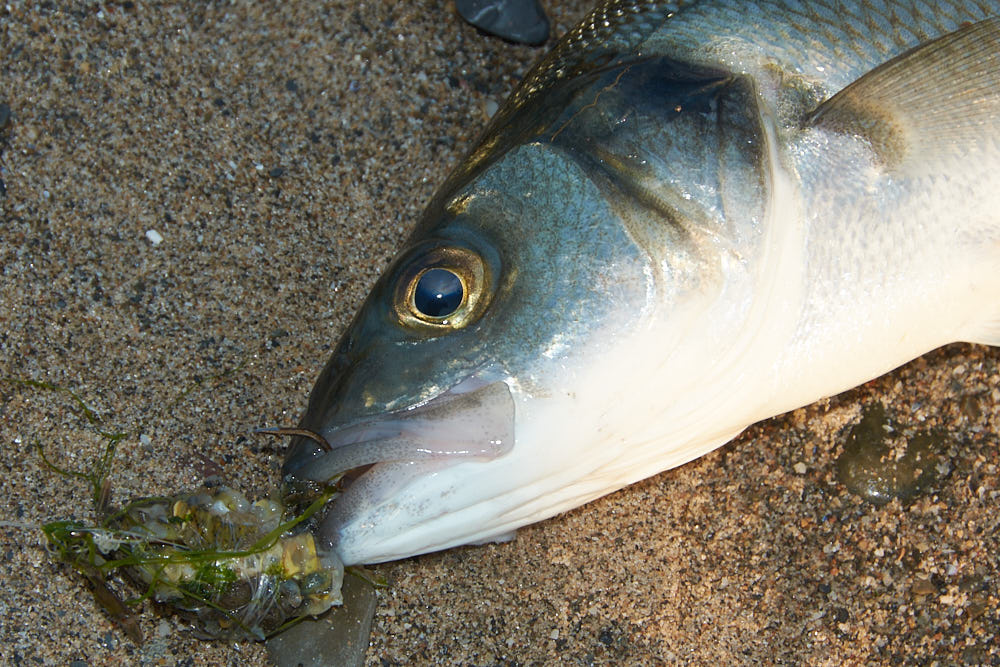
Method
Keep your tackle to a minimum so you stay mobile. A small rucksack and even a sling pack, like the HTO Sling Bag with spare rigs and weights in etc, plus a bait bucket is all you need. You’ll often get one or two bites then the tide will push you back. Also, the fish are constantly moving, and you need to intercept them as they work the beach towards your noted hotspots.
Its vitally important to hold the rod all the time to quickly hit the aggressive bites. In calm seas, hold the rod pointing down directly towards the sea with the line tight. This maximises what happens at the hook end coming back directly up the line to the rod tip. Strike by simply lifting the rod up and backwards. In rougher seas, hold the rod parallel across the body with the tip leaning slightly seawards. You’ll feel a take on the rod tip fractionally before the rod tip moves and you need to hit these hit and run bites fast by sweeping the rod backwards and slightly upwards. A tight line to the lead is essential when rough ground bassing otherwise you’ll miss a host of bites. Taking a Tronixpro Sand Spike with you, to setup at a base came will allow you to bait up without having to put your rods and reels on the sharper rocks, stones and sand.
You’ll often find that you get a bite within a few seconds of the lead hitting the water. The bass come to the noise, see or smell the bait and take it, so be prepared for this.
Try not to cast more than 40-yards unless you need to, to find the fish. The majority of takes will come just three or 4 rod lengths out, or within the first 30-yards as this is where the surf action is churning up the seabed and exposing food.
Change the crab bait every 10 to 15 minutes as the scent needs to be strong for the fish to easily find it. Bass won’t always follow up a weak scent trail if it means they must expend a lot of energy to find it.
